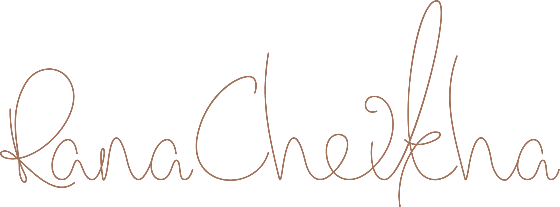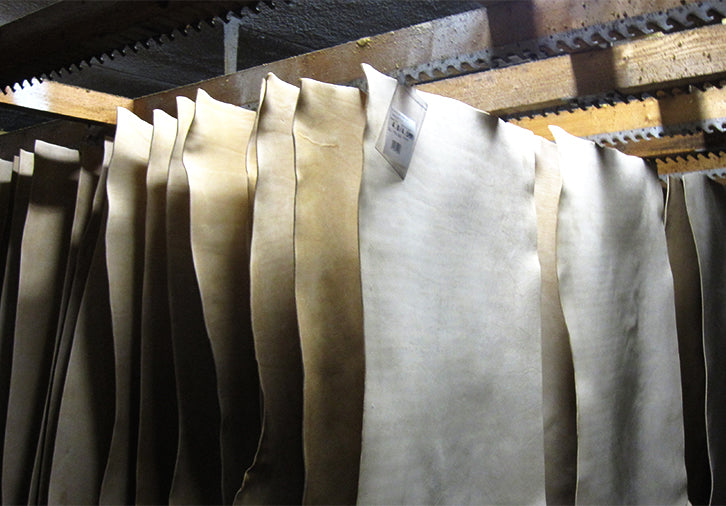Leather is a beautiful material. It is versatile, durable and reliable. It characteristically will not become fragile when in contact with water, will not decay when wet drying afterward, and does not become glutinous if exposed to strong heat.
Although we all know that leather comes from animal skins, we might not know the time consuming and technical process required to take it from being a decomposable skin to a preserved and usable material. This is a lengthy (and not for the faint-hearted if I may add) process known as tanning.
The primary function of the tanning process is to stop decomposition and increase durability by altering the protein structure of animal skins.

There are three main types of tanning. These are:
1. Vegetable-tanned leather
2. Chrome-tanned leather
3. Pit-tanned leather
What’s the difference? Here’s a brief overview:
1. Vegetable-tanned leather- It has a distinct aesthetic and handling that ages uniquely
- It uses ingredients found in different vegetable matter, such as tree bark, wood, leaves, fruits and roots and other similar sources
- The leather is recognizable by yellow or light beige coloration (largely used for the preparation of sole and lining leathers)
- It is the oldest tanning method and usually takes longer to complete
- The process is not necessarily eco-friendly, but it does use less mount of tannis than other methods and does use natural, sustainable and renewable raw materials
2. Chrome-tanned leather (wet blue)
- Most common method due to the cost and time required
- More supple and pliable than vegetable-tanned leather
- Does not discolour or lose shape as drastically as vegetable-tanned leather
- Used for leathers needed to be consistent in form and that can be used for products worn for many years without the loss of properties
- Mostly used for footwear because it does not change as much as other leathers when wet
- Very bright colours can be dyed
- The process is constantly being studied and upgraded to use less chemical materials, have more comprehensive recycling, reduce the use of water and improve the waste management system as the chemicals used are strenuous for the environment
2. Pit-tanned leather (wet blue)
- Stiffer, durable and more brittle than other forms of leather
- Used for insole, outsole, counter, heel and welt leathers
- Process soaks the leather in pits over 3 stages (or more) with different solutions and tanning agents (taking between 6 to 11 weeks)
- Raw hides are transformed into hard, massive, natural coloured leather sheets resistant to water and high temperatures.

The process
In each of the tanning processes, different chemicals, timings and finishing are used, but do still all follow a similar production structure. Let us look more closely at the most common type of tanning: chrome tanning.
Chrome tanning in a nut-shell:
- Raw hides arrive from the slaughterhouse quickly to avoid decomposition (there are various methods to preserve it during transportation).

- Skins are cleaned and then washed in a liming solution in large drums. This loosens the hair in preparation for exfoliation and fleshing.

- The fleshing and exfoliation process takes place next. Because the skin softens after liming, the hair follicles are relaxed making it easier to remove (depending on the finish requested, hair saving or semi-hair saving systems can be used). Here the skin’s hair and fat are removed (fat/hair/chemical waste has to be rid of environmentally-friendly way). The cleaned skins are now graded, judging the quality of the skin and whether or not it will be processed further.
- De-liming of the skins takes place next. This is done by putting the skins in large drums to remove the lime with various acids, and then washed with water.
- Skins can now be coloured by dyeing or staining.
- Skins are then dried by one of the below methods:
- being hung up conveyed through a drying tunnel,
- ‘sticking out’ which involves placing the leather grain side down on large glass plates and pushing a blunt blade across it,
- or stretching the leather on wooden frames
(for options 2 and 3, the leather dries at temperatures between 40 - 60C and rests for 1 - 2 days)

- The surface of the leather is then treated by fats in order to improve softness and shine.

- The skin is finished by smoothing. The flesh side is ironed with a hand-held iron or plated in a machine where a rolling cylinder presses the grain side of the leather into a steel sheet heated to 80 - 90C.
We now have leather!
Signing-off: The Shoe Advisor
// Get in touch here or by email at rana@ranacheikha.com for more insight, queries and information //
Connect with us on Instagram & Facebook

